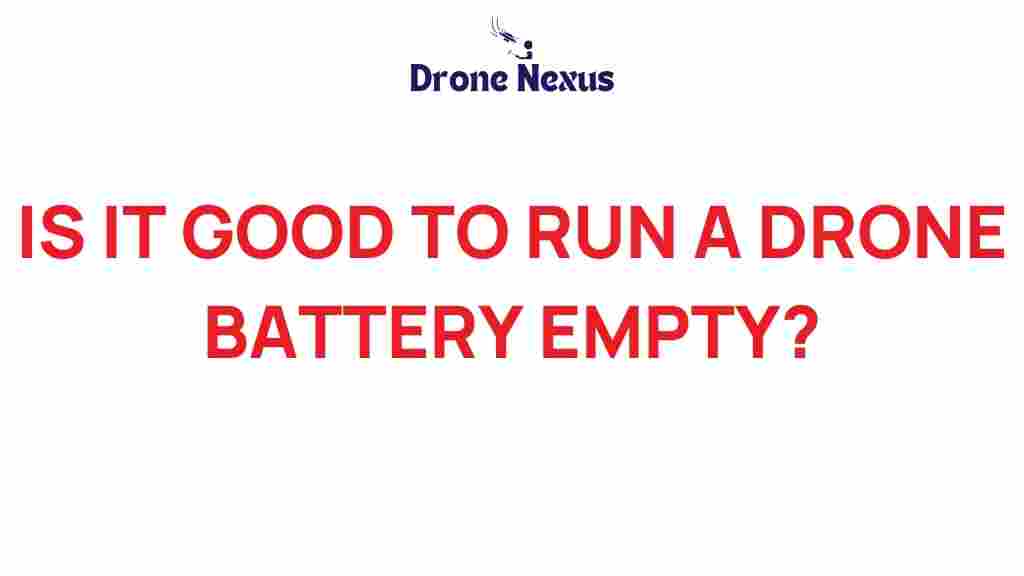The Hidden Risks of Running Your Drone Battery to Empty
As the popularity of drones continues to soar, so does the importance of understanding their components, particularly the drone battery. While it may seem harmless to let your drone battery run down completely, many users are unaware of the hidden risks associated with this practice. In this article, we will explore why you should avoid running your drone battery to empty, the potential damages it can cause, and how to properly maintain your drone battery for optimal performance.
Understanding Your Drone Battery
Before diving into the risks, it’s essential to grasp the basics of how a drone battery works. Most drones operate using lithium polymer (LiPo) batteries, which are favored for their lightweight and high energy density. However, these batteries come with specific characteristics that require careful handling.
- Voltage Levels: Each cell in a LiPo battery operates at a nominal voltage of 3.7V. A fully charged battery typically ranges from 4.2V per cell.
- Discharge Limits: Discharging below a certain voltage (usually around 3.0V per cell) can lead to irreversible damage.
- Cycle Life: The number of charge/discharge cycles a battery can undergo before its capacity significantly diminishes.
The Risks of Running Your Drone Battery to Empty
Letting your drone battery drain completely can have serious consequences. Here are some of the hidden risks:
- Permanent Damage: Discharging a LiPo battery below its safe voltage threshold can cause internal damage, reducing its lifespan and performance.
- Reduced Capacity: A battery run to empty repeatedly may lose its ability to hold a charge, resulting in shorter flight times.
- Swelling: Over-discharging can cause a battery to swell, which can lead to further damage and potential hazards.
- Fire Hazards: A damaged battery poses a fire risk, especially if it is punctured or improperly stored.
Signs of a Compromised Drone Battery
It’s crucial to monitor your battery’s health regularly. Look out for the following signs:
- Swelling or Bulging: If your battery appears swollen, it’s time to replace it.
- Heat Generation: Excessive heat during charging or discharging is an indication of a problem.
- Short Flight Times: If your drone’s flight time has significantly decreased, your battery may be losing its capacity.
Proper Drone Battery Maintenance
To avoid the risks associated with letting your drone battery run to empty, follow these maintenance tips:
- Regular Charging: Always charge your drone battery before it hits a critically low voltage. Aim to recharge when it reaches around 20-30% capacity.
- Storage Conditions: Store your batteries in a cool, dry place. Ideal storage voltage is around 3.8V per cell.
- Use a Balance Charger: A balance charger ensures all cells are charged evenly, prolonging the battery’s life.
- Avoid Extreme Temperatures: Exposure to high or low temperatures can damage your battery. Keep it within the manufacturer’s recommended range.
Step-by-Step Guide to Battery Care
Here’s a simple guide to help you care for your drone battery:
Step 1: Monitor Battery Levels
Keep an eye on your battery levels during flights. Use telemetry data if your drone allows it.
Step 2: Charge Promptly
After each flight, charge your battery as soon as possible to avoid deep discharge.
Step 3: Use Quality Chargers
Invest in a good quality charger designed for LiPo batteries. This ensures safe and efficient charging.
Step 4: Perform Regular Inspections
Before each flight, inspect your drone battery for any signs of damage or wear.
Step 5: Dispose of Old Batteries Properly
When it’s time to retire your battery, dispose of it according to local regulations. Many places have recycling programs for LiPo batteries.
Troubleshooting Common Battery Issues
If you encounter any issues with your drone battery, consider the following troubleshooting tips:
- Battery Not Charging: Ensure the charger is functioning correctly and the battery is properly connected.
- Short Flight Time: Check for swollen cells or consider replacing the battery if it’s over a year old.
- Overheating: If your battery is overheating, discontinue use immediately and let it cool down.
When to Replace Your Drone Battery
Knowing when to replace your drone battery is crucial for maintaining performance. Consider replacing your battery if:
- It has been through more than 300 charge cycles.
- You notice significant swelling or damage.
- Flight times have dropped below half of the original capacity.
Conclusion
Understanding the importance of your drone battery and the risks associated with running it to empty is vital for every drone operator. By adhering to best practices for battery maintenance, you can prolong the life of your battery, enhance performance, and ensure safe operation. Remember, treating your drone battery with care not only protects your investment but also enhances your flying experience.
For more information on drone maintenance, check out this comprehensive guide. Additionally, learn more about battery safety and regulations from experts at Battery University.
This article is in the category Safety and created by DroneNexus Team
